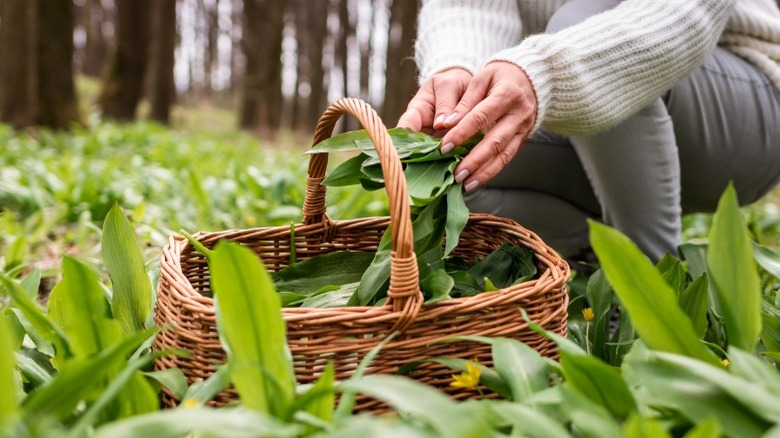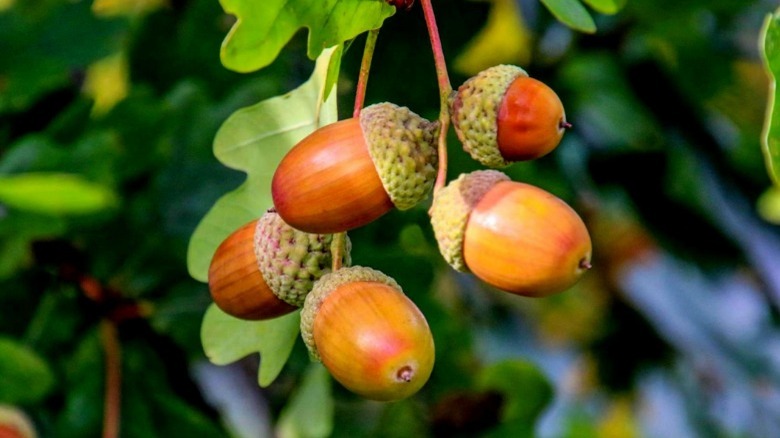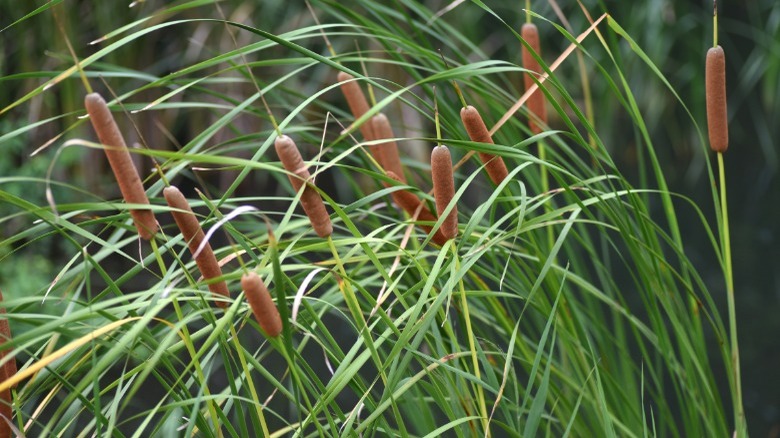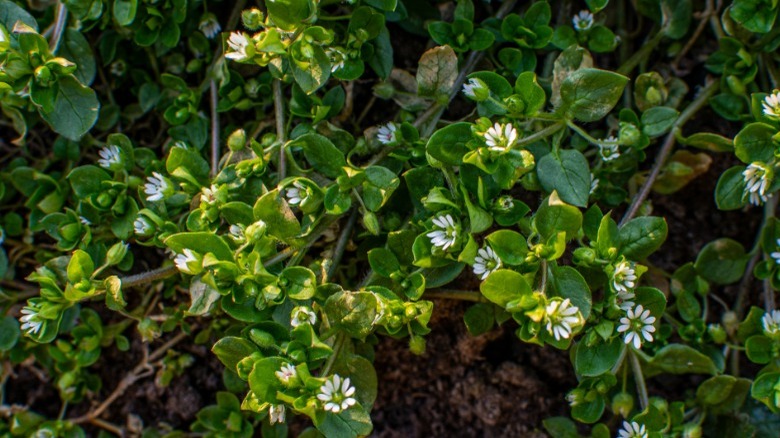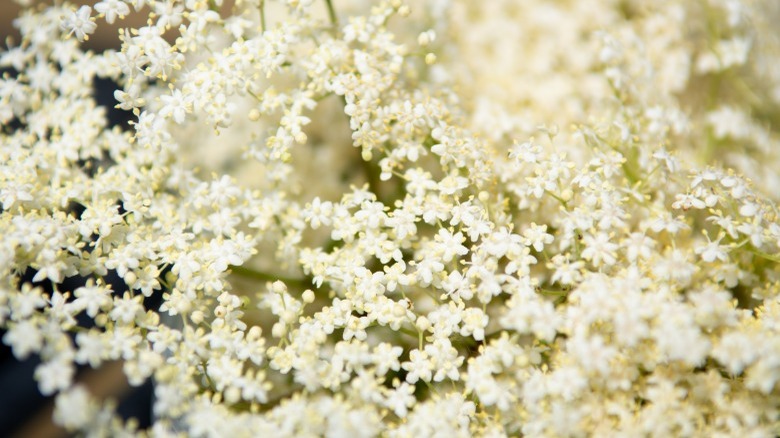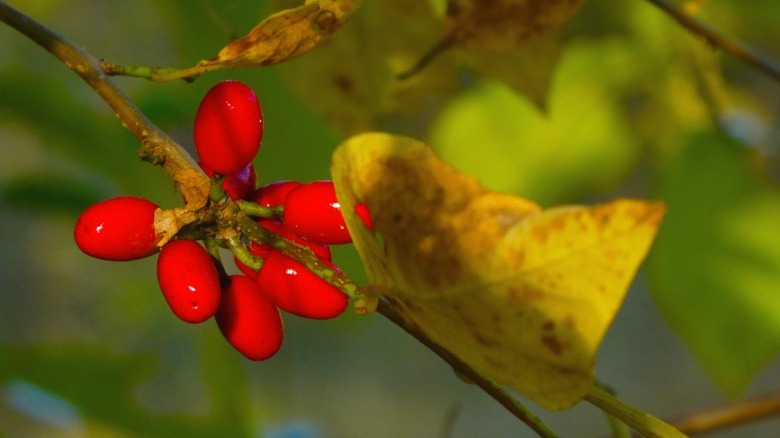20 Edible Plants You Can Forage
Today's heavily urbanized world often robs us of the simple pleasures of engaging with nature and reconnecting with our food sources through foraging. If you're ready to step out of your comfort zone and try incorporating more accessible, seemingly unconventional plants into your diet, read on to discover which commonly overlooked "weeds" are not only edible but hold immense culinary potential. From various alliums to nutritious burdock roots, tender spruce tips, dandelion greens, and fragrant elderflowers, these plants are packed with vitamins and minerals and can make your meals delightfully varied.
But before you head out into the wild, it's important to remember to harvest responsibly, taking only what you need and allowing nature to replenish itself. Additionally, it's crucial to consult field guides and experienced foragers before collecting and consuming wild plants without supervision. Misidentification can lead to serious consequences, so it's better to be safe than sorry. However, with the right knowledge and guidance, foraging can be a safe and enjoyable way to uncover the hidden treasures that Mother Nature has to offer.
1. Wild garlic
Allium ursinum goes by many names: ramsons, stinkbombs, and even bear's garlic (inspired by its Latin moniker). From late January to June, you'll find this garlicky gem forming a lush green carpet in damp, humus-rich woodlands, mainly across Europe but also in the eastern U.S., Ohio, and parts of the Pacific Northwest.
The broad spear-shaped leaves, white six-petaled flowers, immature seed pods, and underground bulbs are all edible. Be cautious, though, as it's easy to confuse Allium ursinum with poisonous lookalikes like lily-of-the-valley and autumn crocus. Pro tip from Jamie Oliver to avoid making the dangerous wild garlic mistake: Rub the leaves to release the unmistakable allium scent; the toxic doppelgangers won't smell like garlic. Tuck it into a quiche or focaccia, blend it into pesto or herby falafel, toss the flowers in a salad, or even ferment the bulbs for a roasted garlic flavor.
2. Purslane
Portulaca oleracea, better known as purslane, is a nutritious and versatile weed that you should be eating more of. This succulent thrives during the hottest months, from June onwards, and forms dense green mats adorned with thick, paddle-shaped leaves, smooth contrasting stems, and tiny yellow flowers.
Purslane is a novice forager's dream, found across the country in open sunny areas and disturbed soils. However, be cautious of dangerous lookalikes, such as sprawling spurge (Euphorbia spp.), which often grow nearby. To differentiate the two, remember that spurges have hairy, woody stems and less meaty leaves and exude a white latex when torn, while purslane does not.
With a unique sweet-sour and slightly spicy taste reminiscent of arugula, this wholly-edible plant is fantastic raw or cooked in dishes where you'd want leafy greens. It's also a nutritional powerhouse, bursting with omega-3 fatty acids and vitamins and rivaling or surpassing spinach in nutritional value.
3. Ramp
Wild leek, ramp, or Allium tricoccum is a versatile allium family member that grows predominantly in the Appalachian states, where moist woodlands are galore. Its unique, pungent-yet-sweet flavor, superior to garlic and onion, makes it a sought-after ingredient in restaurants and home kitchens. Ramps make their appearance in early spring, spurring many celebrations, such as West Virginia's Stink Fest, in their native region.
Identifying ramps won't be a challenge: Their smooth broad leaves centered around a single reddish-purple stalk are easy to spot. A surefire way to tell them apart from poisonous lily-of-the-valley is to crush or cut their leaves to get a whiff of the unmistakable allium aroma. To forage ramps sustainably, you'll need to cut no more than one leaf per plant, preferably from the center of the patch. Afterward, enjoy them in kimchi, compound butter, pesto, sriracha, or any other allium-starring dish.
4. Lamb's quarters
Chenopodium album, also known as lamb's quarters, is a wild spinach cousin. This versatile plant was once a staple in home gardens and kitchens and served as a reliable food source during times of scarcity. A bonus for beginner foragers is that lamb's quarters can grow almost anywhere, even in your backyard, making it an easily spotted, low-impact choice. You'll find it in disturbed soils from spring to fall, with the prime leaf foraging season occurring in May and June.
Throughout its life cycle, the leaves of lamb's quarters remain edible and make an excellent substitute for spinach, with younger plants providing more tender leaves. The plant's diamond-shaped, softly-toothed pale green leaves may look unappetizingly dusty, but this actually indicates its exceptional nutritional value derived from mineral-rich soil. Additionally, you can harvest the seeds in the fall and use them as a wild grain, similar to quinoa.
5. Stinging nettle
It grows everywhere, is easy to identify, and is versatile in the kitchen — Urtica dioica, commonly knowns as stinging nettle, is a foraging novice's dream. The only catch? The full-body protection (think tall boots, long sleeves and pants, and thick rubber gloves) you need to forage it. Once armed with the right gear, opt for young, tender springtime leaves, which boast the best flavor and texture.
A good reason to add stinging nettle to your diet is its impressive nutritional profile, believed to positively affect metabolism, blood sugar levels, and muscle pain. After harvesting, remember to gently wilt, steam, sautee, or dehydrate the leaves to neutralize the plant's infamous sting and unlock a world of culinary potential. From crispy chips to delectable soups and soothing teas to comforting Irish mashed potatoes, the humble nettle can do it all.
6. Wild strawberry
Fragaria vesca is a charming wild plant often referred to as the woodland or alpine strawberry. Found throughout the U.S. (except desert areas), this low-growing plant bears small, bright red berries hidden beneath the crinkly leaves. It loves ample sunlight, which is why you'll most likely find it in forest clearings, meadows, and on the edge of hiking trails during the summer. While its lookalikes may be flavorless, they aren't poisonous; white flowers and a distinctive strawberry aroma will help identify the real deal.
Though you can use these fragrant berries in any strawberry recipe, they are best enjoyed raw, straight from the stem, and the leaves can be dehydrated into tea. So come summer, follow in the footsteps of Queen Elizabeth, who loved to pick this delightful fruit herself, and venture into the forest to discover the exquisite taste of wild strawberries.
7. Dandelions
Though considered a common weed, dandelions (or Taraxacum officinale if you're feeling fancy) offer a treasure trove of culinary delights. All parts besides the flower stem are edible and available throughout the year. However, the best time to harvest leaves is in early spring before the flowering starts, and the flowers need to be snatched right after (ideally, during morning hours), as their sunny disposition is short-lived. The roots are at their best in fall and winter.
Don't hesitate to cook and eat dandelions post-harvest. The nutrient-rich, tender young greens can be simply sautéed with garlic and olive oil or cooked down with other spices to mask their earthy, bitter taste. The unripe flower buds can be pickled as capers, and the flowers can be eaten fresh or used to create vegan honey, as well as alcoholic drinks. Finally, the roots can be roasted and ground to make a caffeine-free coffee substitute.
8. Acorns
The humble nuts of oak trees, botanically classified as Quercus, make a bountiful fall harvest in forests and parks. Gathering these underappreciated gems from white oaks is a delight for wild food enthusiasts of any skill level, as they're easily recognizable with their distinctive caps and smooth, round shapes. These nutrient-rich nuts have been a part of human diets since antiquity, and perhaps that's a valid reason to set your doubts aside and start eating acorns.
While gathering acorns is effortless, preparing them for consumption requires patience, as you need to remove the tannins responsible for bitterness by soaking shelled nuts in cold or hot water, depending on later use. The former method is best if you intend to grind them into a fine meal or flour, making an excellent protein-rich foundation for rustic polenta, baked goods, or even a "coffee" with a subtle, earthy flavor. Otherwise, use them as you would other nuts.
9. Milkweed
A cherished staple for indigenous peoples of North America and a vital sustenance source for Monarch butterflies and caterpillars, common milkweed (Asclepias syriaca) can be found across the eastern half of the continent in spring and summer months. As you embark on your milkweed journey, remember to apply mindful harvesting methods, leave ample supply for the Monarchs, and keep your hands protected from its sticky sap. It's best if an experienced forager helps you identify it and watch out for its mildly toxic, incredibly bitter lookalike, dogbane.
From tender young shoots and leaves, ideal for steaming or sautéing, to delicate unripe buds (or "milkweed broccoli") that can be pickled or transformed into delightful fritters, milkweed provides a cornucopia of possibilities for the adventurous palate. The fragrant flowers can be used to infuse drinks and vinegar, and the pods are a slime-less okra alternative best enjoyed batted and fried.
10. Broadleaf plantain
Not to be confused with the sturdy relative of the banana, this weed boasts both medicinal and culinary properties. Found thriving in disturbed soils from April through September (year-round in warmer climates), the unassuming members of the Plantaginaceae family have always been prominent in folk medicine, providing relief for ailments such as insect bites, wounds, and digestive issues.
For the North American culinary adventurer, broadleaf, narrow-leaf, and blackseed plantains offer all their edible parts. Young leaves impart a mild, slightly bitter flavor to salads, while mature leaves can be boiled or sautéed like cultivated leafy greens. As the plant's seeds are a rich source of soluble fiber, they can be ground into a meal or sprinkled over salads. Finally, a note for vegans: Plantago ovata's seeds are the base of a binding agent known as psyllium, an excellent plant-based egg substitute.
11. Cattails
You might have never considered eating this plant, but you've definitely seen cattails (Typha latifolia) swaying around wetlands and waterways across the country. Surprisingly, various parts of this tall, slender plant offer a bountiful feast at different stages of development and serve as a sustainable food source for adventurous foragers. As long as you ensure the water source is uncontaminated, cattails can become a delightful addition to your foraging repertoire.
The young shoots, gathered in spring, can be peeled and eaten raw, pickled, or blanched and enjoyed with a dash of oil, salt, and pepper. The green catkins can be boiled and consumed like corn on the cob. Later in the season, the yellow pollen adds a unique protein-rich twist to baked goods. Even the rhizomes, harvested in the fall and winter, can be processed into flour or cooked like starchy vegetables.
12. Chickweed
Your local hen's favorite treat, Stellaria media, is best known for its oval leaves, small white flowers resting on top of star-shaped sepals, and hair-like line along the stem. Knowing this will help you differentiate it from toxic imposters such as the orange-flowered scarlet pimpernel and bald-stemmed spurges. When you encounter this cool-weather plant in the wild, carefully harvest the tender top leaves by cutting them off with scissors, being mindful not to uproot the plant.
All parts of this nutrient-packed weed are edible and can be used the same way you'd use commercially grown greens. In its raw form, it adds a refreshing, sprouty flavor to salads, sandwiches, and wraps. When cooked, chickweed wilts and tastes like spinach and can be sautéed or added to soups, stews, and stir-fries. The delicate flowers and seed pods can also be used as a garnish or mixed into dishes for an added burst of flavor and nutrients.
13. Elderflowers
From fritters and cakes to popsicles and lemonades, elderflowers (of the Sambucus nigra tree) are capable of wonderful things in a forager's kitchen. Black elder's delicate flowers grace the landscape in various parts of North America, where it evolved into several subspecies. Elderflowers have a unique, floral, and slightly honeyed flavor, and their alluring scent adds an extra layer of depth to anything from a citrusy elderflower cordial to lemon sorbet and Turkish delight.
You'll find elder trees in full bloom during the late spring and early summer months. To identify them, look for flat-topped, umbrella-shaped flowerheads composed of small, five-petaled creamy white flowers with an intoxicatingly sweet smell. While foraging for elderflowers, be cautious of potentially dangerous lookalike plants, such as the poison hemlock and giant hogweed. These plants have similar flower clusters but lack the elderflower's distinct aroma.
14. Spicebush
Lindera benzoin, known as edible spicebush, is among the most underrated wild foods. Growing predominantly in the Eastern United States, this shrub can be found in the shades of trees and moist areas. Its leaves are best harvested in spring and summer, while the berries ripen from late summer to early fall. To identify spicebush, see if the leaves emit a spicy aroma when crushed. Additionally, the plant bears small, yellow flowers in spring and bright red berries in early fall.
Its leaves and twigs are utilized for masala chai and other drinks, but the true magic lies in its spicy berries. Their flavor and smell are characterized by complex warm, fragrant notes similar to allspice, cardamom, cloves, cinnamon, and nutmeg. You can dry and grind the berries into a spice for soups, stews, and baked goods or use them as a seasoning for proteins and vegetables.
15. Sheep's sorrel
If you're familiar with the cultivated common sorrel and its uses, you won't have any trouble taming with its wild counterpart's sharp, acidic flavor. Sheep's sorrel (Rumex acetosella), also known as sour weed or red sorrel, is a tangy, wild delight found in moors and grasslands (and even your backyard, if the soil is acidic enough) from spring through fall. With its reddish stems and leaves resembling arrowheads, identifying this zesty plant is a breeze.
A citrusy aroma and a tart, refreshing taste make sheep's sorrel a versatile kitchen ingredient. Wherever you need an invigorating flavor twist — be it a raw salad or a pureed vegetable soup — sheep's sorrel can provide it. When dried and ground, the leaves transform into a perfect thickener for sauces or a tangy flour capable of adding a punch to baked goods or being turned into noodles.
16. Spruce tips
Spruce tips are the delightfully flavorful gifts of the Christmas tree, botanically known as Picea, which flourishes in temperate regions across the U.S. These tender, young growths appear in spring, sporting vibrant green hues at the ends of spruce branches. When foraging, approach mature trees and be mindful of how much you take.
Spruce tips pack a zesty, fresh flavor reminiscent of citrus, but some can be quite astringent. Fortunately, it's safe to savor them as you go to find the best-tasting ones. However, beware of the toxic yew tree and its flat, linear needles. Raw spruce tips can be enjoyed as a tangy snack, while their striking green color makes them an attractive edible garnish. They also work really well in desserts, particularly creamy ones, as well as drink and syrup infusions. Pickling and freezing fresh tips are a great way to preserve this vitamin C-rich plant.
17. Burdock
This plant might be known for its large, wavy, heart-shaped leaves and purple, thistle-like flower heads, but it hides a delicious secret beneath the surface. You may not find this biennial Asteraceae family member in Hawaii or Florida, but it grows extensively throughout the rest of the country, making it an accessible find. It's best to harvest first-year roots in the fall or before spring shoots emerge, ensuring tenderness and optimal flavor.
The leaf stems and flower stalks are edible, but it's the nutrient-dense roots that make burdock a staple in Asian cuisines and a gift to foragers and plant-based eaters everywhere. They have a mild, earthy flavor with a hint of sweetness and a crisp, starchy texture. Peel the roots and soak them in water with a splash of vinegar to avoid discoloration before adding them to a stir-fry or a stew.
18. Japanese knotweed
Reynoutria japonica, a one-time ornamental import to Europe that turned aggressively invasive, has a surprising culinary potential: from jams, chutneys, and pickles, to rhubarb substitute in pies and crumbles. This resilient bamboo lookalike has a citrusy flavor with a rhubarb-like aroma. Once you get your hands on some young shoots, wash and chop them before cooking to enjoy this nutrient-packed plant.
Foraging for Japanese knotweed is best during its young growth stage in the spring. Look for small, bamboo-like stems with contrasting red splotches, large, alternating heart-shaped leaves, and a hollow center. Native to East Asia, it can be found in whopping 42 states, often near water sources and disturbed areas. Removing it from its habitat can actually be helpful (and makes a fun sound as a bonus), but be careful not to forage in places where it could've been treated with herbicide, not to spread any part of it around as you carry it home, and destroy all scraps.
19. Onion grass
Allium vineale, a weed better known as wild garlic, crow garlic, or onion grass, likely thrives in your backyard, offering a delightful alternative to ramps as well as cultivated green onions. With its botanical name in mind, you can transform this weed into an onion-like powder, pickle its bulbs, or utilize it as you would chives. You could also mix it into a herby butter, a wild pesto, or a creamy dip.
With peak season during spring and early summer, onion grass can be found extensively throughout the Eastern United States, stretching as far west as Mississippi. Additionally, it thrives along the entire length of the West Coast. To identify this plant, look for slender, u-shaped leaves protruding from a single underground bulb. Similarly to its allium relatives, the onion smell (or lack thereof) is a surefire way to establish its identity.
20. Sunchokes
Sunchokes, also known as Jerusalem artichokes, bear the botanical name Helianthus tuberosus. They are native to North America (and not Jerusalem, as the name might suggest). You can find them at produce markets or forage for them yourself from late fall to early spring. To identify sunchokes, look for tall, sunflower-like plants with small, yellow flowers. The edible part is the tuber, which grows underground.
If you've never tried sunchokes and wonder what they taste like, you'll be pleasantly surprised by their mild, sweet, nutty flavor, earthy aroma, and crisp texture that's similar to water chestnuts. Before cooking, it's crucial to wash the tubers thoroughly, as they have a knobby surface that can harbor dirt. They can be eaten raw in salads, roasted, glazed, or pureed into soups and sauces. To retain their nutrients, it's best to cook sunchokes with their skin on.
Static Media owns and operates Tasting Table and Mashed.

